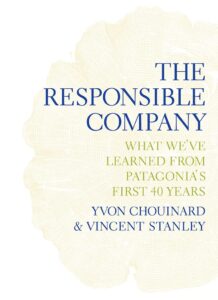- Home
- /
- Entrepreneurship
- /
- The Journey of Green Entrepreneurship
Introduction
Green entrepreneurship is more than just a business model; it’s a lifestyle, a commitment, and a pathway to sustainability. It’s about taking bold steps, often into the unknown, to solve the environmental challenges we face. In this age of climate change, resource depletion, and growing environmental awareness, green entrepreneurship stands as a beacon of hope. But it’s not easy, not by any stretch. It’s a road less traveled, but that’s what makes it so rewarding.
What Is Green Entrepreneurship?

Green entrepreneurship refers to the creation of businesses that aim to solve environmental problems or offer products and services that benefit the environment. These businesses focus on sustainability, often integrating eco-friendly practices throughout their operations, from sourcing materials to production, distribution, and even end-of-life product management.
But it’s more than just the environment. It’s about creating value that’s sustainable in every sense—economically, socially, and environmentally. Green entrepreneurs look for ways to make a positive impact on the planet while also ensuring that their business is viable and profitable.
Why Green Entrepreneurship Matters?

The stakes have never been higher. We’re at a critical juncture where the decisions we make today will determine the future of our planet. Green entrepreneurship isn’t just a choice; it’s a necessity. Businesses that prioritize the environment are not only contributing to a healthier planet but are also positioning themselves for long-term success in an increasingly eco-conscious market.
Companies that embrace green practices are gaining a competitive edge, as consumers, investors, and governments increasingly demand sustainable solutions. This shift is creating opportunities for entrepreneurs to innovate, reduce environmental impact, and build businesses that thrive in the long run. Green entrepreneurship is not just about profit—it’s about making a lasting, positive difference in the world.
Environmental, Social, and Governance (ESG) criteria have become crucial factors for businesses, shaping the way companies operate and how they are perceived by stakeholders. Entrepreneurs who integrate ESG principles into their business models are not only responding to consumer demands but are also aligning with investor expectations and regulatory requirements. By adopting sustainable practices, green entrepreneurs can reduce risks, attract ethical investors, and build resilient businesses that can thrive in a rapidly changing world.
Embracing ESG and sustainability isn’t just about staying competitive—it’s about leading the way in creating a positive impact on the environment and society, ensuring that businesses are not just profitable but also responsible stewards of the planet.
Real-Life Case Studies

Let’s delve into some inspiring examples of green entrepreneurship in action.
Case Study 1: GreenGeeks

GreenGeeks, founded by Trey Gardner in 2008, is a web hosting company that has made sustainability the core of its business model. Recognizing the significant environmental impact of data centers, which consume vast amounts of energy and produce substantial carbon emissions, GreenGeeks committed to not just offsetting its carbon footprint but reversing it.
For every unit of energy GreenGeeks consumes, they invest three times that amount in renewable energy via the Bonneville Environmental Foundation. This approach has made GreenGeeks one of the most eco-friendly web hosting providers in the industry. Their commitment to sustainability extends beyond energy usage—GreenGeeks also implements various other eco-friendly practices, such as efficient server usage, reduced e-waste through equipment recycling, and supporting environmental non-profits.
GreenGeeks’ business model demonstrates that even in a traditionally high-impact industry like web hosting, it’s possible to operate sustainably and profitably. Their success also illustrates the growing demand among consumers for environmentally responsible services, setting an example for other companies in the tech industry.
Case Study 2: Tesla

Tesla, founded by Elon Musk, is a prime example of green entrepreneurship on a grand scale. Tesla’s mission is to accelerate the world’s transition to sustainable energy, and they’ve done so by revolutionizing the electric vehicle market. But it wasn’t easy. Tesla faced immense challenges, from nearly going bankrupt to dealing with skepticism from traditional automakers. Today, Tesla is a global leader in electric vehicles, proving that green entrepreneurship can be both impactful and profitable.
Case Study 3: Beyond Meat

Beyond Meat, founded by Ethan Brown, is another shining example. The company has created plant-based meat alternatives that are not only delicious but also significantly reduce the environmental impact of meat production. Beyond Meat’s products use less water, land, and energy while emitting fewer greenhouse gases than traditional meat. The company’s success shows that consumers are ready and willing to embrace sustainable alternatives.
Case Study 4: Ecovative Design

Ecovative Design, founded by Eben Bayer and Gavin McIntyre, is a company that’s literally growing a better future. They’ve developed a technology that uses mycelium (the root structure of mushrooms) to create biodegradable packaging materials, furniture, and even building materials. Their products offer an eco-friendly alternative to plastics and other non-renewable materials, helping to reduce waste and carbon emissions.
Case Study 5: Patagonia

Patagonia, an outdoor clothing brand, exemplifies green entrepreneurship. The company is known for its commitment to environmental sustainability, using organic cotton and recycled materials in its products. Patagonia also encourages customers to repair rather than replace their gear, promoting a culture of sustainability. The company’s “Worn Wear” program allows customers to trade in used gear for store credit, further reducing waste. Patagonia’s approach has not only garnered a loyal customer base but has also set a benchmark for corporate responsibility in the fashion industry.
Challenges Faced by Green Entrepreneurs

High Initial Costs and Funding Difficulties
One of the most significant barriers for green entrepreneurs is the high initial capital required to launch sustainable ventures. Green businesses often involve advanced technologies or sustainable materials that can be expensive. This results in longer payback periods and less predictable returns than traditional businesses. Many green entrepreneurs struggle to secure adequate funding due to these factors, as investors may be skeptical about the viability and profitability of green initiatives.
The funding landscape for green entrepreneurs is evolving, with options like crowdfunding, impact investing, and green bonds becoming more accessible. However, many entrepreneurs are still unaware of these alternatives or lack the networks to leverage them effectively.
Complex Regulatory Environment
Navigating the regulatory landscape can be particularly challenging for green entrepreneurs. They often face a myriad of legal and administrative hurdles, such as licensing requirements, environmental standards, and trade restrictions. These regulations can vary significantly by location and industry, adding layers of complexity to compliance efforts. The inconsistency in regulatory frameworks can deter innovation and increase operational costs, making it difficult for green businesses to thrive.
Moreover, frequent policy changes can create uncertainty, making it hard for entrepreneurs to plan long-term strategies. Green entrepreneurs need to stay informed about regulatory developments and engage with policymakers to advocate for more supportive policies.
Market Competition and Consumer Awareness
Green entrepreneurs often compete against established companies that prioritize profit over sustainability. These traditional businesses may have more resources and established customer bases, making it difficult for new entrants to gain market share. Additionally, while consumer awareness of environmental issues is growing, many still prioritize price and convenience over sustainability, which can limit the demand for green products.
To overcome this challenge, green entrepreneurs must effectively communicate the benefits of their products and educate consumers about the importance of sustainability. Building a strong brand identity that resonates with environmentally conscious consumers can help differentiate their offerings in a crowded market.
Technological Challenges and Innovation
While technological advancements present opportunities for green entrepreneurs, they also pose challenges. Many green businesses rely on cutting-edge technologies that require continuous innovation and adaptation. This can be resource-intensive, particularly for small startups with limited funding. Additionally, the rapid pace of technological change can lead to concerns about obsolescence, as entrepreneurs must constantly update their offerings to remain competitive.
Green entrepreneurs must invest in research and development to stay ahead of trends and ensure their products meet evolving consumer demands. Collaborating with technology companies or research institutions can provide valuable insights and resources for driving innovation.
Building Trust and Partnerships
Establishing trust and forming partnerships is crucial for green entrepreneurs, especially when working with suppliers, customers, and investors. Many potential partners may be hesitant to engage with new green businesses, particularly if they are unfamiliar with sustainable practices or materials. This can hinder collaborative efforts that are essential for scaling operations and increasing market reach.
Green entrepreneurs should focus on building strong relationships within sustainability networks and demonstrate their commitment to environmental goals. Transparency in operations and clear communication of their value proposition can help foster trust and encourage partnerships.
The Role of Government and Society

Government policies play a critical role in fostering green entrepreneurship. Tax incentives, subsidies, and supportive regulations can accelerate the growth of green businesses. Additionally, consumer awareness and demand for sustainable products are essential drivers of the green economy.
A case in point is the proliferation of solar energy companies. Government policies promoting renewable energy, coupled with declining costs of solar panels, have created a fertile ground for solar entrepreneurs.
How to Start a Green Business

If you’re thinking about becoming a green entrepreneur, the first step is to identify a problem you’re passionate about solving. What environmental issue keeps you awake at night? What change would you like to see in the world? Once you’ve identified your focus, start researching. Look at existing solutions and think about how you can improve them or come up with something entirely new.
Develop a Business Plan
A solid business plan is crucial. It should include your mission statement, target market, competitive landscape, revenue model, and go-to-market strategy. But more importantly, it should reflect your commitment to sustainability.
Secure Funding
Finding the right investors can be tricky. Look for those who share your passion for sustainability and understand the long-term value of your business. Crowdfunding can also be a good option, as it allows you to build a community of supporters who believe in your mission.
Build a Strong Team
Surround yourself with people who are as committed to your vision as you are. A diverse team with different skills and perspectives will help you navigate the challenges of green entrepreneurship.
Stay Committed
The road will be tough, but persistence is key. Stay true to your mission, and don’t be afraid to pivot if necessary. Remember, success in green entrepreneurship is not just about profit—it’s about making a positive impact on the world.
FAQs About Green Entrepreneurship

How do I find investors for a green business?
Look for investors who are passionate about sustainability and understand the long-term value of your business. Impact investors, venture capitalists focused on green tech, and crowdfunding platforms are good places to start.
What are the biggest challenges in green entrepreneurship?
The biggest challenges include securing funding, educating the market, and competing with established industries. However, these challenges provide opportunities for innovation and growth.
Can small businesses be green entrepreneurs?
Absolutely. Green entrepreneurship is not limited to large corporations. Small businesses can make a big impact by adopting sustainable practices and offering eco-friendly products and services.
What is the difference between traditional entrepreneurship and green entrepreneurship?
Traditional entrepreneurship focuses primarily on profit maximization, while green entrepreneurship integrates environmental sustainability into its core business model. Green entrepreneurs seek to create value not only for their businesses but also for the planet.
How can I start a green business?
To start a green business, identify a sustainable niche that aligns with your passion and expertise. Conduct market research to better understand customer needs and preferences. Create a business plan outlining your sustainability practices and how they will set you apart from competitors.
Are there specific industries that are more conducive to green entrepreneurship?
Yes, industries such as renewable energy, sustainable agriculture, eco-friendly products, and waste management are particularly conducive to green entrepreneurship. These sectors offer numerous opportunities for innovation and growth.
What skills are necessary for a green entrepreneur?
A green entrepreneur needs a blend of business acumen, environmental knowledge, and innovation. Strong problem-solving skills, adaptability, and a passion for sustainability are also essential.
Recommended Books for Aspiring Green Entrepreneurs

“Let My People Go Surfing” by Yvon Chouinard

This book is more than just a business memoir; it’s a manifesto for sustainable living. Yvon Chouinard, the founder of Patagonia, shares the unconventional journey of how he built one of the most environmentally conscious companies in the world. Chouinard’s philosophy of putting the planet before profit is woven throughout the book, offering valuable lessons on leadership, ethics, and the importance of staying true to your values. For any aspiring green entrepreneur, this book serves as a powerful reminder that business can be a force for good.
“The Responsible Company” by Yvon Chouinard and Vincent Stanley

Co-written by Chouinard and Vincent Stanley, another Patagonia executive, this book is a practical guide for businesses looking to adopt sustainable practices. It provides a blueprint for creating a responsible company that benefits not just the bottom line, but also the environment and society. The authors share Patagonia’s experiences, both successes and failures, offering actionable advice on everything from reducing carbon footprints to building a strong corporate culture. This book is essential reading for anyone serious about green entrepreneurship.
“Cradle to Cradle: Remaking the Way We Make Things” by William McDonough and Michael Braungart

This groundbreaking book challenges the traditional linear model of production, where products are made, used, and then disposed of. Instead, McDonough and Braungart propose a circular model, where products are designed with their entire lifecycle in mind—either being reused, recycled, or returned to the earth without harm. The book introduces the concept of “upcycling,” where waste materials are transformed into new products of higher value. It’s an inspiring read that encourages green entrepreneurs to rethink how they design and manufacture products, aiming for a zero-waste future.
“The Upcycle: Beyond Sustainability—Designing for Abundance” by William McDonough and Michael Braungart

A follow-up to “Cradle to Cradle,” this book delves deeper into the idea of creating abundance through design. McDonough and Braungart argue that sustainability alone is not enough—we must aim for a world where products and processes contribute positively to the environment. They explore innovative ideas such as buildings that generate more energy than they consume and products that improve the environment as they are used. This book is a call to action for green entrepreneurs to not just minimize harm but to actively contribute to the health of our planet.
“The Innovator’s Dilemma” by Clayton M. Christensen

While not specifically focused on green entrepreneurship, this classic book offers crucial insights into how disruptive innovations can create new markets and displace established ones—a concept highly relevant to the green economy. Christensen explains why companies that succeed with one innovation often fail when confronted with disruptive new technologies. For green entrepreneurs, understanding this “dilemma” is key to navigating the challenges of bringing sustainable innovations to market and competing against established industries. It’s a must-read for anyone looking to drive change in the business world.
The Future of Green Entrepreneurship

The future of green entrepreneurship is bright. As more consumers, investors, and governments recognize the importance of sustainability, the demand for green products and services will continue to grow. But the journey won’t be easy. It will require vision, persistence, and a willingness to take risks. But for those who are willing to take the plunge, the rewards—both financial and environmental—are well worth it.
In the end, green entrepreneurship is about more than just building a successful business. The goal is to make the world a better place for future generations. And that, perhaps, is the most rewarding achievement of all.
If you are eager to know about Green Software, then check out our article on Green Software by clicking here.




















Leave a Reply